Last Thursday was an interesting day for me. Charles Fleming, one of the top reporters for the Los Angeles Times and the guy who does their motorcycle stories, visited with us and rode the Cyclone with me in the San Gabriel Mountains.
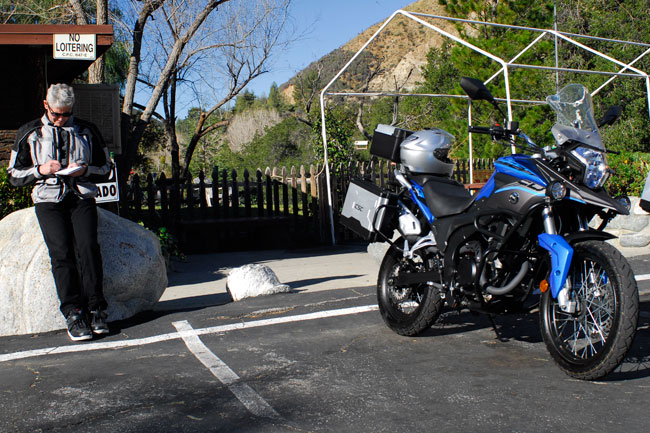
Charles, making notes up in the San Gabriel Mountains after riding the CSC Cyclone
It was a grand morning, but to be perfectly honest, I was a bit off my game. The weather was beautiful and the air was crisp, but I just wasn’t as alert as I felt I needed to be while I was out riding with Charles. There wasn’t anything I could put my finger on, but I just wasn’t as with it as I like to be. I could tell I wasn’t sharp. We rode about 20 miles and I made it back to the plant just fine, but…
Well, before I go there, let me share with you something I posted on the Motofoto.cc site a long time ago…
****************************************
Dropped Bikes
I wrote this for a friend who dropped a very expensive motorcycle while putting it on the sidestand. He was really upset with himself and I thought he might enjoy hearing about the times I dropped my bikes. I stopped writing after the fifth or sixth memory because I was laughing so hard I thought I might hurt myself….
So, here goes….
Drop Number 1 – Impromptu Stargazing
My friend Louie V and I were wrapping up a hard 500-mile day through Arizona back in the 1990s. I know what you are thinking….500 miles is not that much for a solid day’s riding, but it was brutally hot in the way that only Arizona can be in the summertime. I was on my CBX and Lou was on his Gold Wing. We stopped for gas and Louis filled up first. While I was filling up the CBX, Lou rode over to the air hose to top off his tires. I filled my tank, fired up the CBX, and rode over to Lou, paralleling the sidewalk.
I put my kickstand down and started to lean the CBX over.
The next thing I knew I was staring at the stars. I had no idea what happened for a few seconds, and then I realized: Rats! I had fallen off my motorcycle, and I was laying on my back looking up at the night sky. The first thought that went through my mind was: “Did anyone see me do this?” I hadn’t even been drinking! How could that have happened?
Well, what happened was this: When I extended the sidestand, it hit the curb before it fully extended, and it didn’t go over center. When I leaned the CBX over, it just kept on going.
Total damage? One turn signal lens cover, one scratched fairing (still got that scratch), and lots of lost pride.
Drop Number 2 – Lock-to-Lock Finally Means Something to Me
 This time, I was easing into my own driveway on my 2-week-old Suzuki TL1000S. Gorgeous bike. Bright red. A real rocketship. As I made the sharp turn into the driveway, I turned the forks to keep my balance. Lock-to-lock turning on the Suzuki is waaaay less than any motorcycle I had ever ridden.
This time, I was easing into my own driveway on my 2-week-old Suzuki TL1000S. Gorgeous bike. Bright red. A real rocketship. As I made the sharp turn into the driveway, I turned the forks to keep my balance. Lock-to-lock turning on the Suzuki is waaaay less than any motorcycle I had ever ridden.
The bottom line? I couldn’t turn the bars far enough to keep my balance at low speed.
The results? BAM! Suddenly, the TL and I were both on our sides in my own driveway! The first thought that went through my mind was “Did anyone see me do this?”
Total damage? One scratched fairing and lots of lost pride. Lots and lots of lost pride.
Drop Number 3 – Them Darn Sidestands Again
A couple of weeks after Drop Number 2, I was letting my now 4-week-old, slightly-scratched TL1000S warm up in the driveway. The bike was on its sidestand, facing south. Just past my garage door, the driveway slopes down ever so slightly. Really slightly. I mean, hardly any slope at all. Out of the corner of my eye, I thought I saw the Suzuki move forward a bit. Nah, I thought, it’s gotta be an optical illusion.
Two seconds later: BAM! The Suzuki was on its side!
Wow, I thought, this thing sure likes laying down in my driveway.
My next thought: “Did anyone see me do this?”
The results? I couldn’t tell. The fairing was scratched, but maybe it was the same scratch from 2 weeks ago. No lost pride this time, but lots of cussing about Suzuki engineering and lousy sidestands.
Drop Number 4 – Dismounting As An Olympic Event
This time I was winding out my 4-month old TL1000S on the road from my brother-in-law’s place. Wowee, I thought, this thing is fast. I must have hit 80 miles an hour when I realized I gotta slow down. That Suzuki slipper clutch works great, I thought…. just keep downshifting and it’s almost like an ABS system on the rear wheel. Hmmh, that curve is coming up awful fast. Maybe I’ll just give it a touch of front brake.
Uh oh, I thought as I unloaded the rear wheel when I got on the front brake. That corner is really coming up fast now, and the back end is fishtailing all over the place. I almost had that sucker stopped when the front wheel just touched the curb. Down we both went, again. I executed a precision somersault as I departed controlled flight and rolled up into a sitting position.
The first thought that went through my mind was “Did anyone see me?” This time, the answer was yes. There was a lady in a station wagon, who stopped and asked “Are you okay?”
“Yeah, lady, I did that on purpose.” I didn’t know what else to say.
The results? I couldn’t tell. Maybe it was just the same scratched fairing. Again, lots and lots of lost pride. No injuries, though. My lucky day.
Drop Number 5 – The Prize Winner
This time I was changing the front tire on the CBX in my garage. I put the bike on the center stand and removed the front wheel. Bikes with center stands are great, I thought. Once I had the front wheel off I started thinking about the replacement tire. I used Bridgestone Spitfires on that bike and they were great. I decided I would get the raised white letter Spitfire tire this time. That would really look cool.
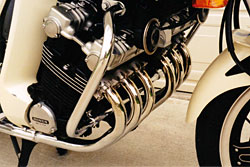 Well, I thought, if I do that I have to get the back tire to match. So, I thought, I might as well take the back wheel off, too. I’ll just get them both changed at the same time. This is the point at which things took a decided turn for the worse. And, I’ll admit to having already had a few beers…
Well, I thought, if I do that I have to get the back tire to match. So, I thought, I might as well take the back wheel off, too. I’ll just get them both changed at the same time. This is the point at which things took a decided turn for the worse. And, I’ll admit to having already had a few beers…
What could I have possibly been thinking? Well, I was still thinking about how cool raised white letter tires would look on my pearl white CBX, and I started to remove the rear wheel. The rear axle bolt was on really tight, though. I decided I needed to get a bigger wrench, you know, more leverage, that sort of thing. I thought I might as well get another beer while I was up, too. I grabbed another beer, got the longer wrench, found the leverage I was looking for…and…..and…
Uh, oh, the CBX started to roll forward off the center stand, and, whoa, there was no front wheel there….funny how everything seemed to be happening in slow motion at that point.
The moral of this one? If you’re gonna screw up, screw up big time. Why just drop a bike when can find a way to drop it so that it falls over into your wife’s new Acura RL?
The bottom line? One dinged up Acura, one thoroughly upset wife, one busted and cracked CBX oil pan (an item no longer made by Honda), oil all over the garage floor, and the certain knowledge that while center stands are good, they are not that good….
So, if you’ve ever dropped your bike, don’t feel too bad. It happens to all of us.
Sometimes more than once.
****************************************
So, that last story…the one about the CBX that I thought was the prize winner, the mother-of-all-dropped-bikes stories?
Well, it turns out the dropped CBX episode held the record for a few years, but I guess records were meant to be broken. You can guess where this is going. When Charles and I returned to the plant, I parked the Cyclone next to my Subaru, and at that point, the parking lot slopes down ever so slightly.
I had parked the Cyclone in that very same spot before with no problem, but that was then, and this was now. I put the side stand down, and the next thing I knew, both yours truly and the yellow Cyclone were leaning against the Subaru. Whoa! What the hey?
Yep, I dropped the Cyclone. I wasn’t alert, or I wasn’t paying attention, or maybe it was just time for me to drop a bike again. And I thought the time I dropped the CBX into my wife’s new car 17 years ago was the prize winner. Nope, if you want to get the brass ring, drop your bike in front of an LA Times reporter who’s there to do a story on your company and the motorcycle. Wow.
The Cyclone fared pretty well…all it had was a broken clutch lever, and that would have been okay had the bike and I not fallen into the Subie. The Subie? Well, it didn’t do so well. It needs a new front fender. Any yours truly? Serious damage to my pride, folks, but other than that I’m okay.
Ride safe, keep the shiny side up, and don’t drop your bike (but if you do, try not to do it in front of a reporter)!
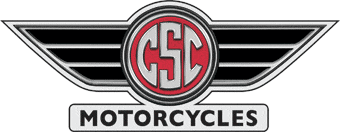






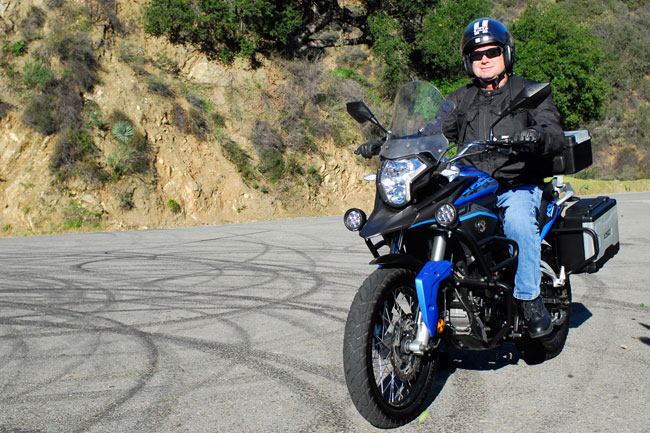
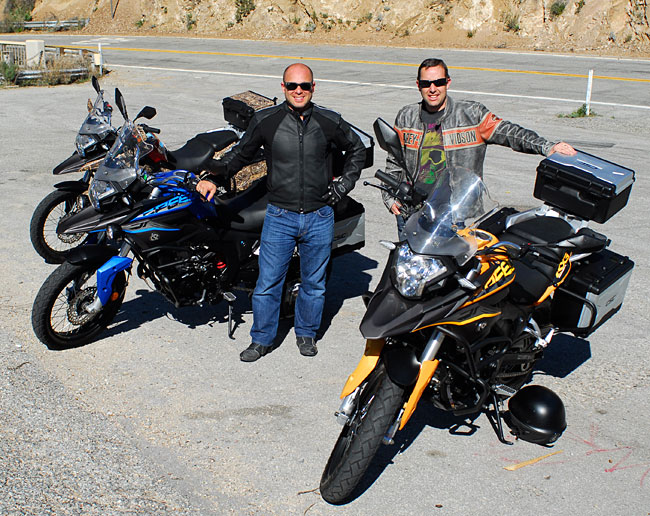

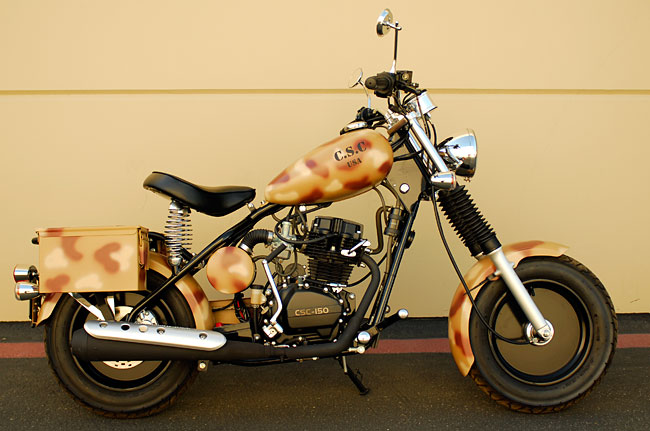
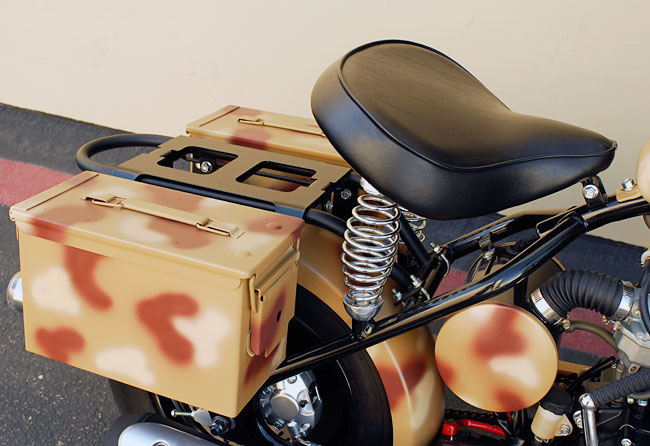
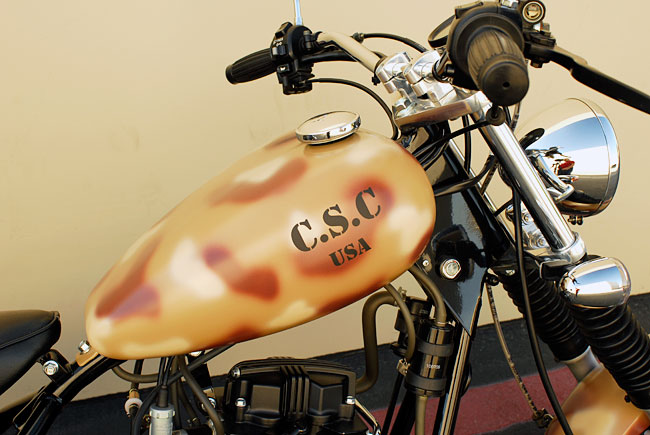

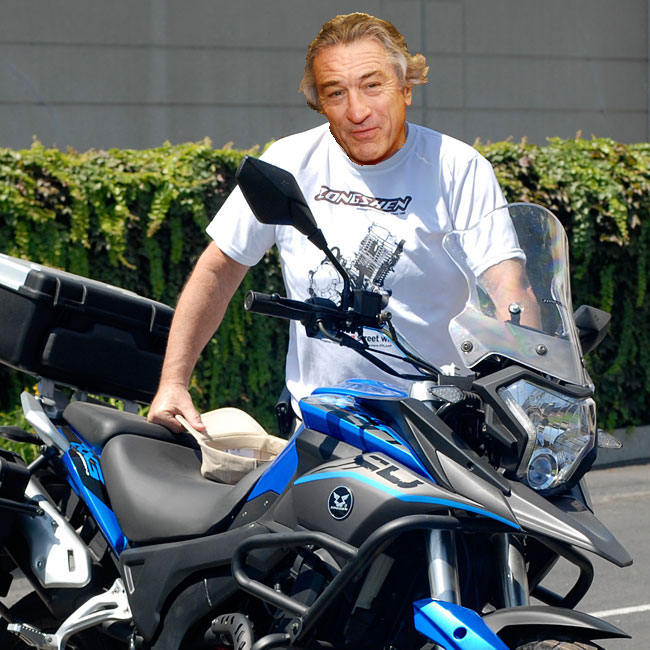
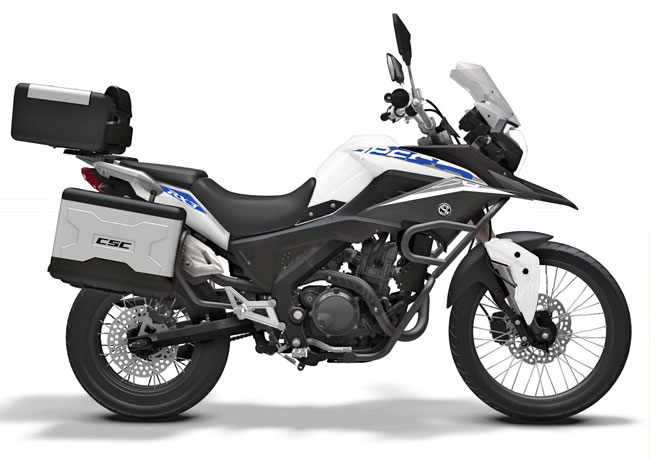







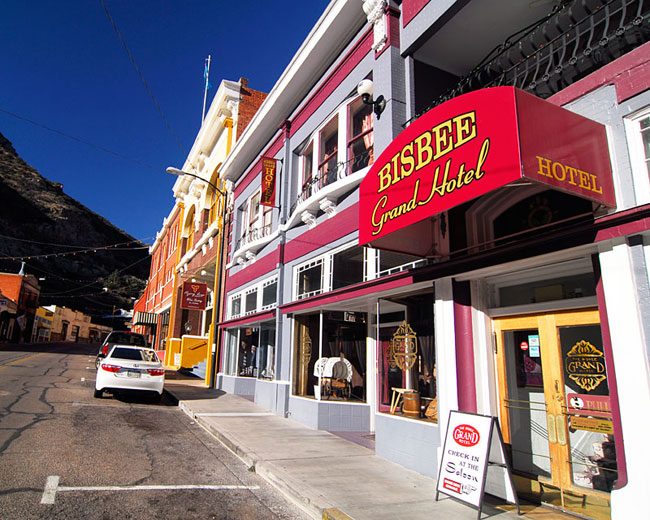
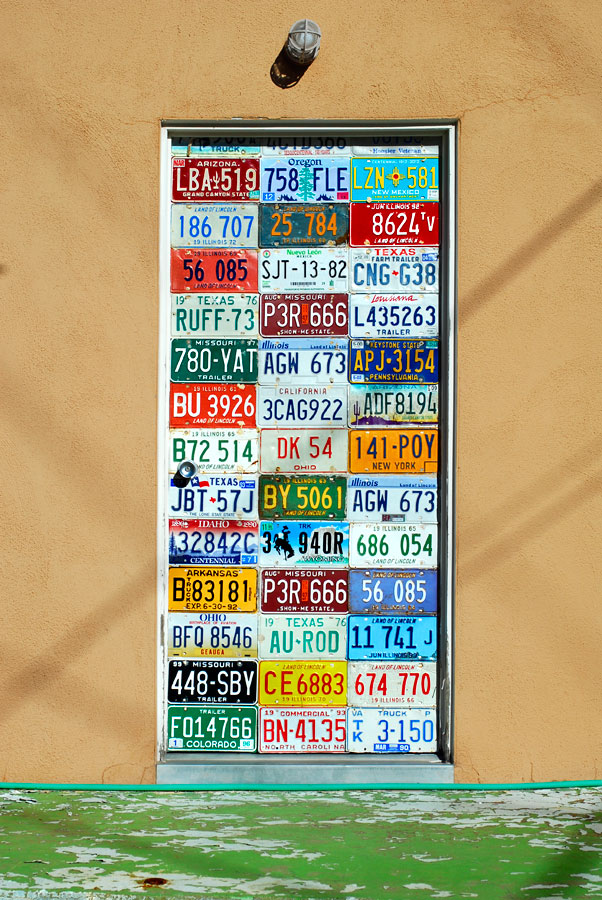

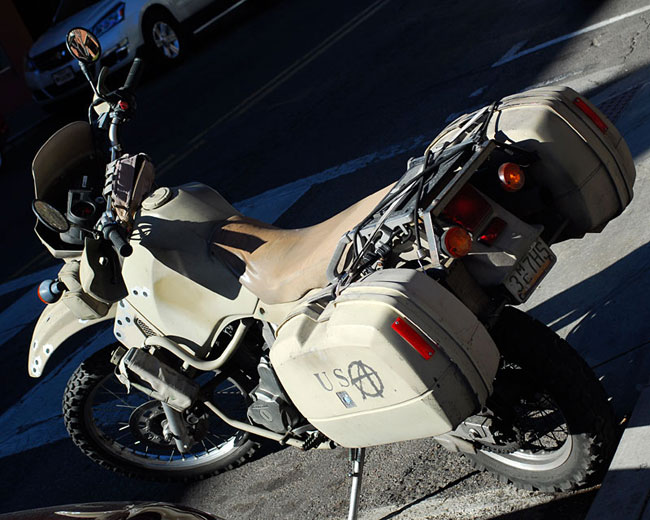
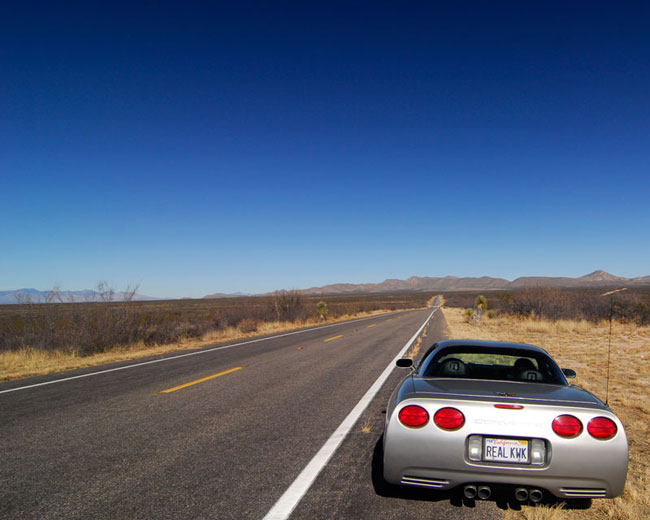
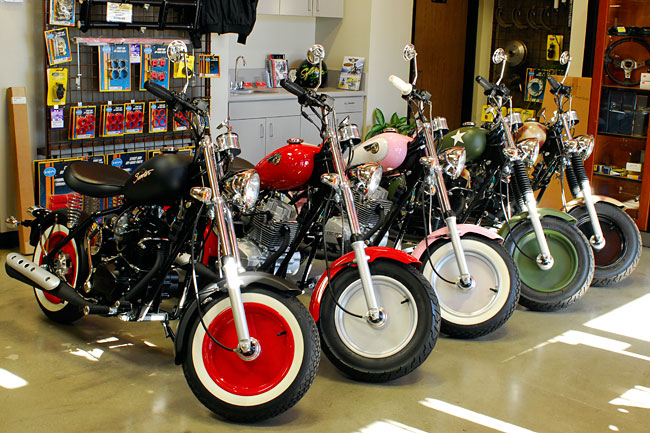
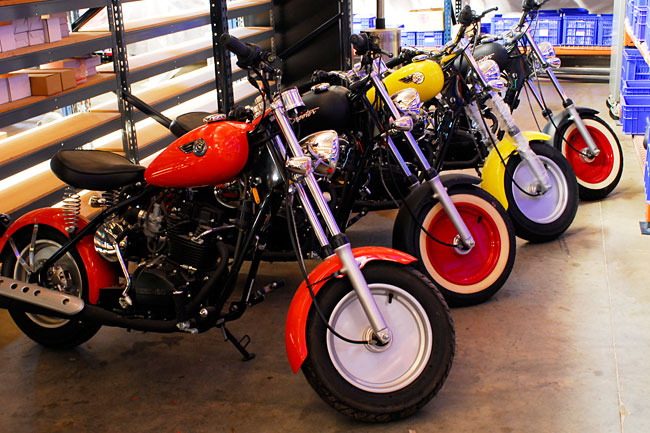
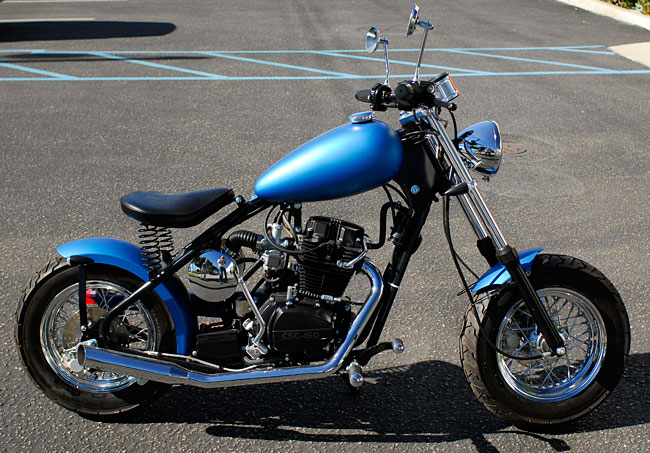
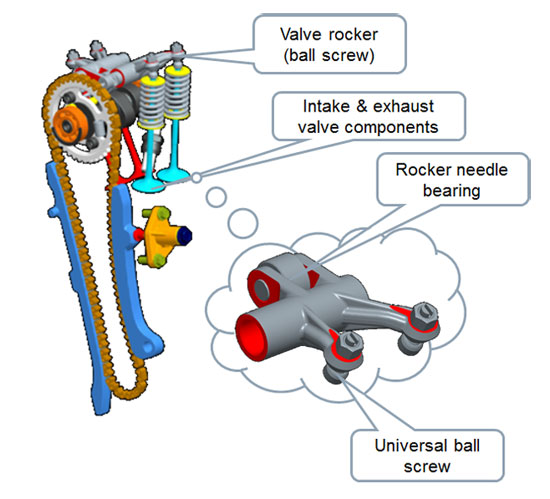
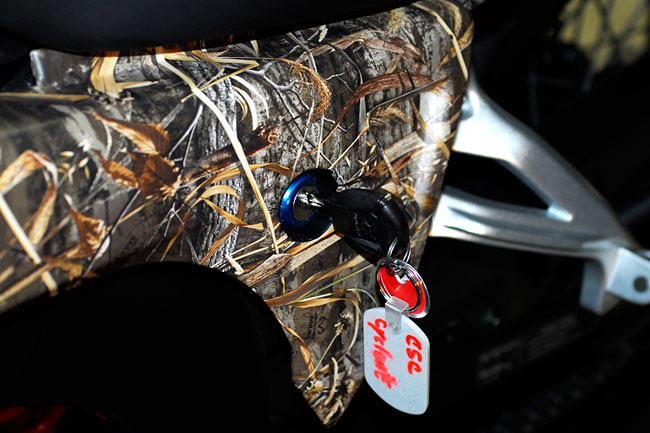
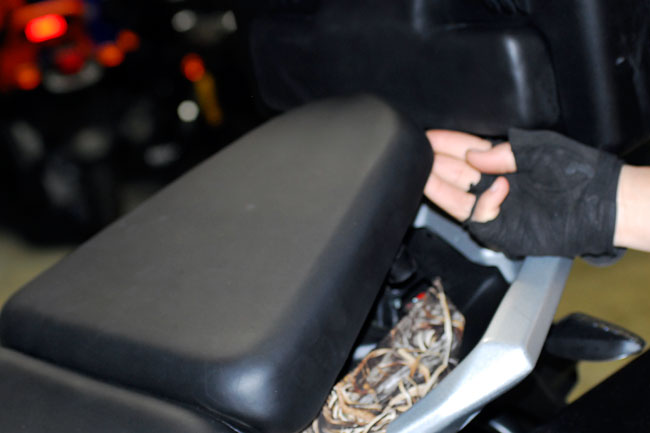
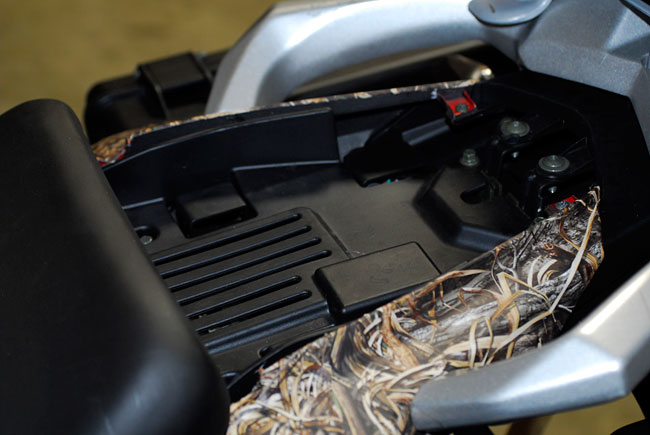

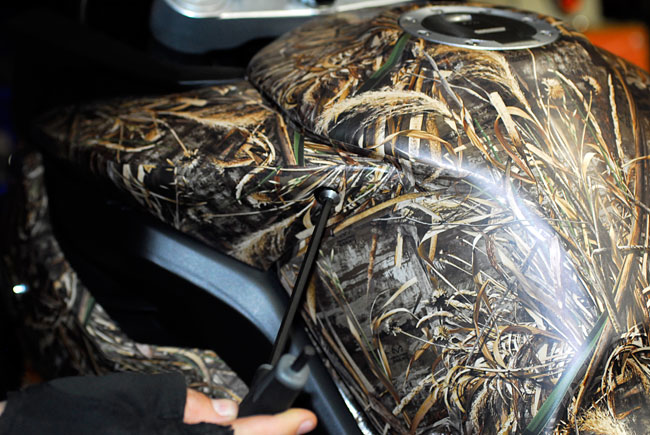

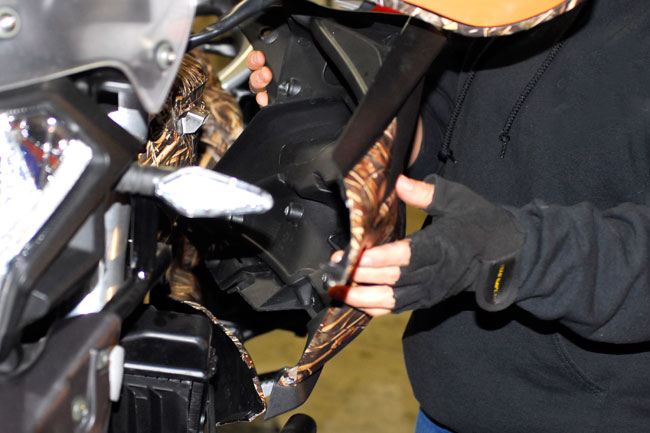
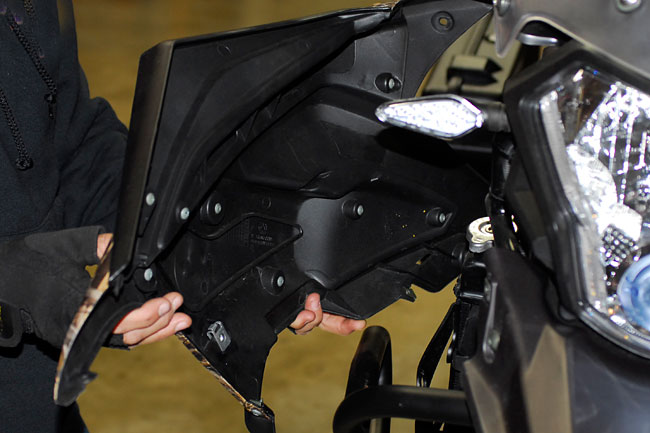
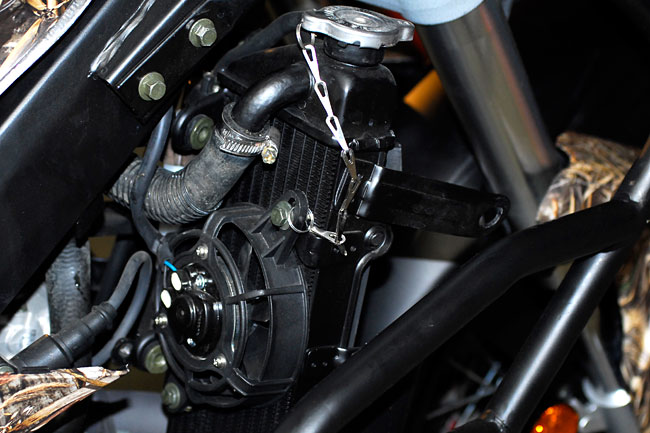
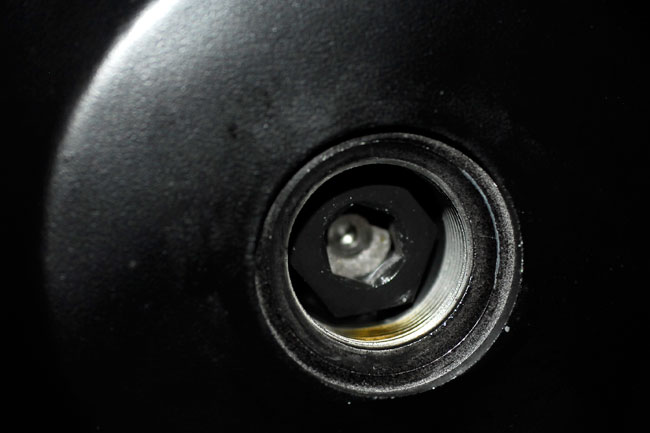


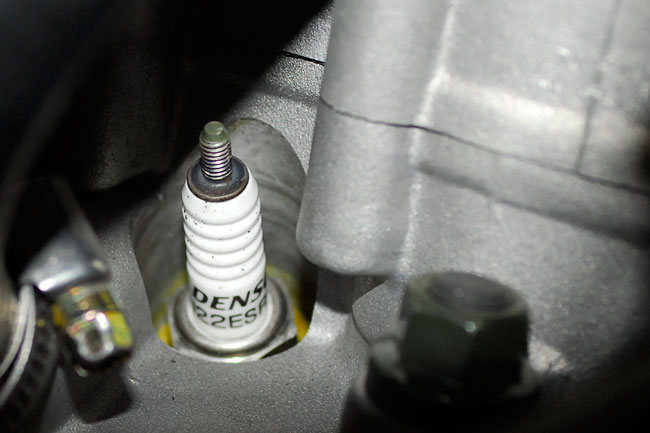
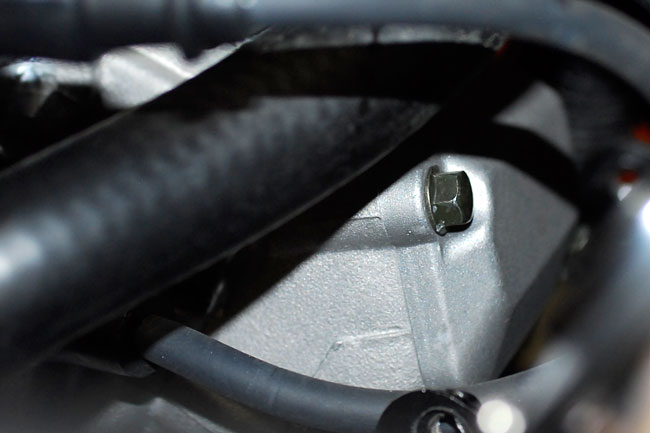
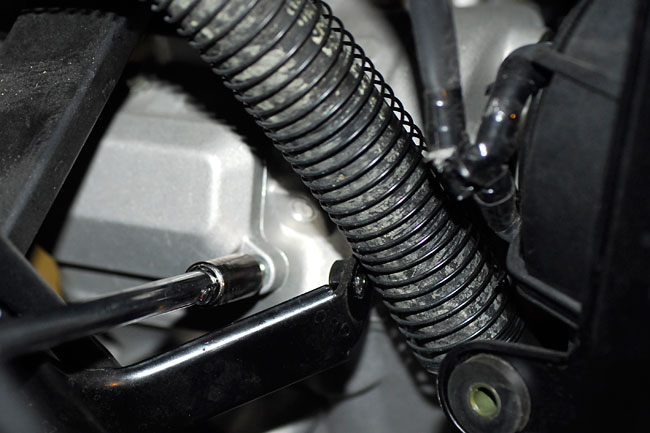
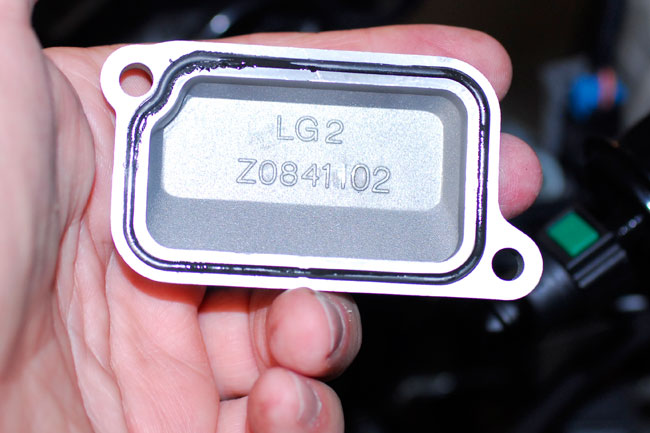
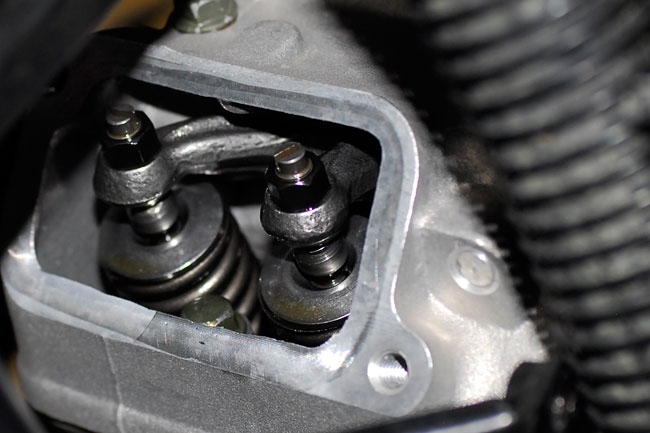

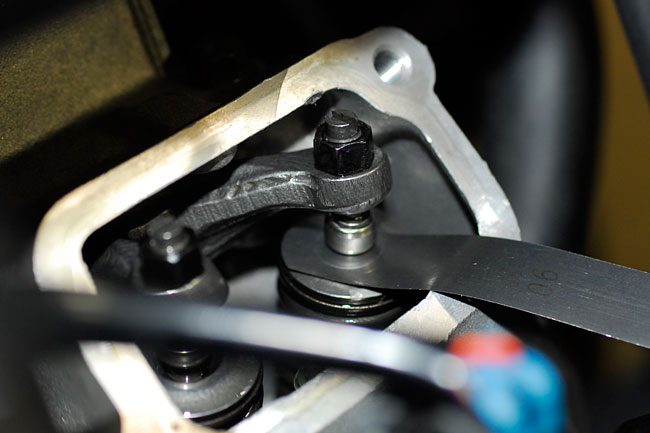
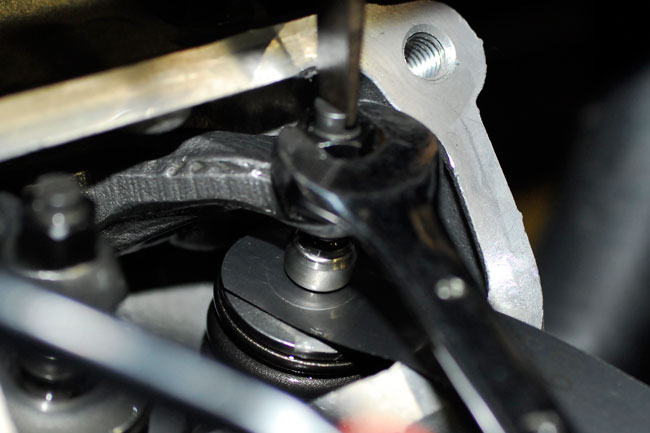
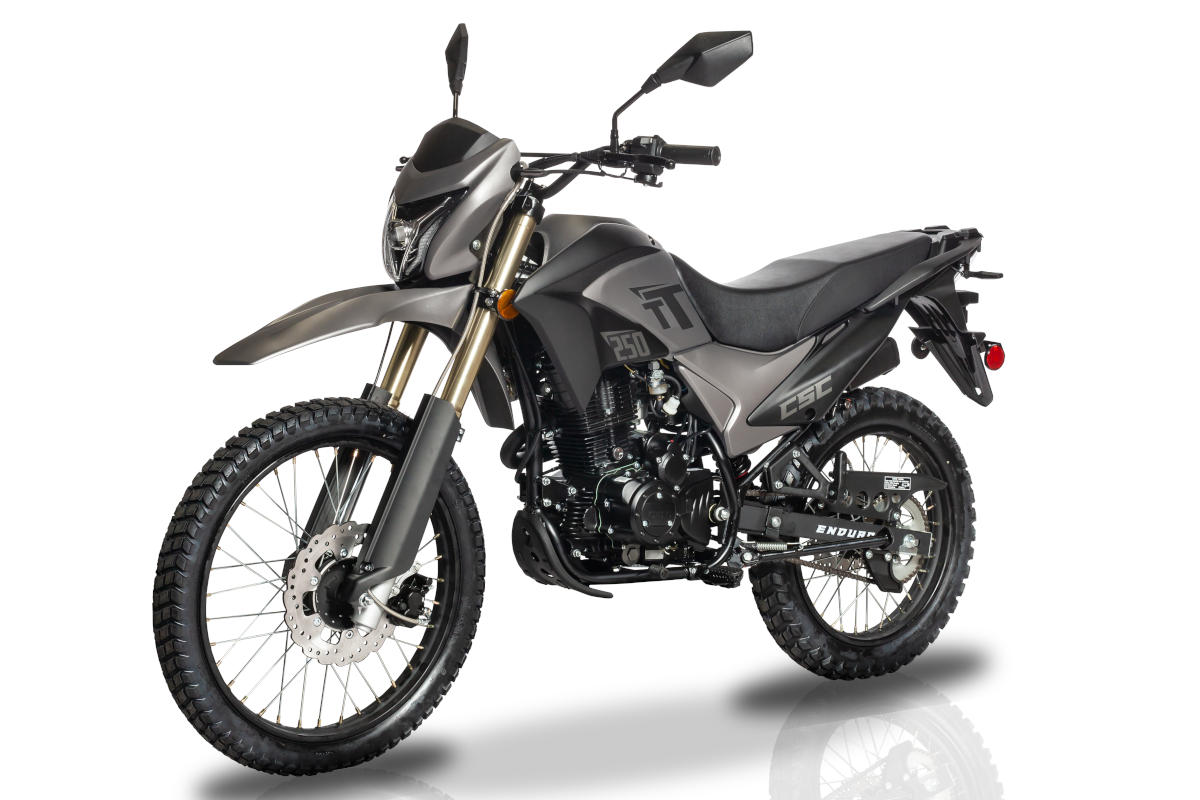 TT250 Enduro
TT250 Enduro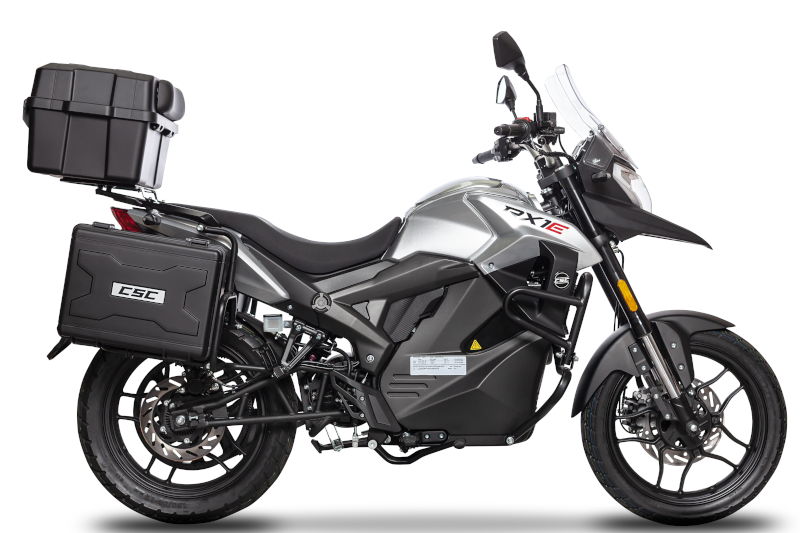 RX1E Electric Motorcycle
RX1E Electric Motorcycle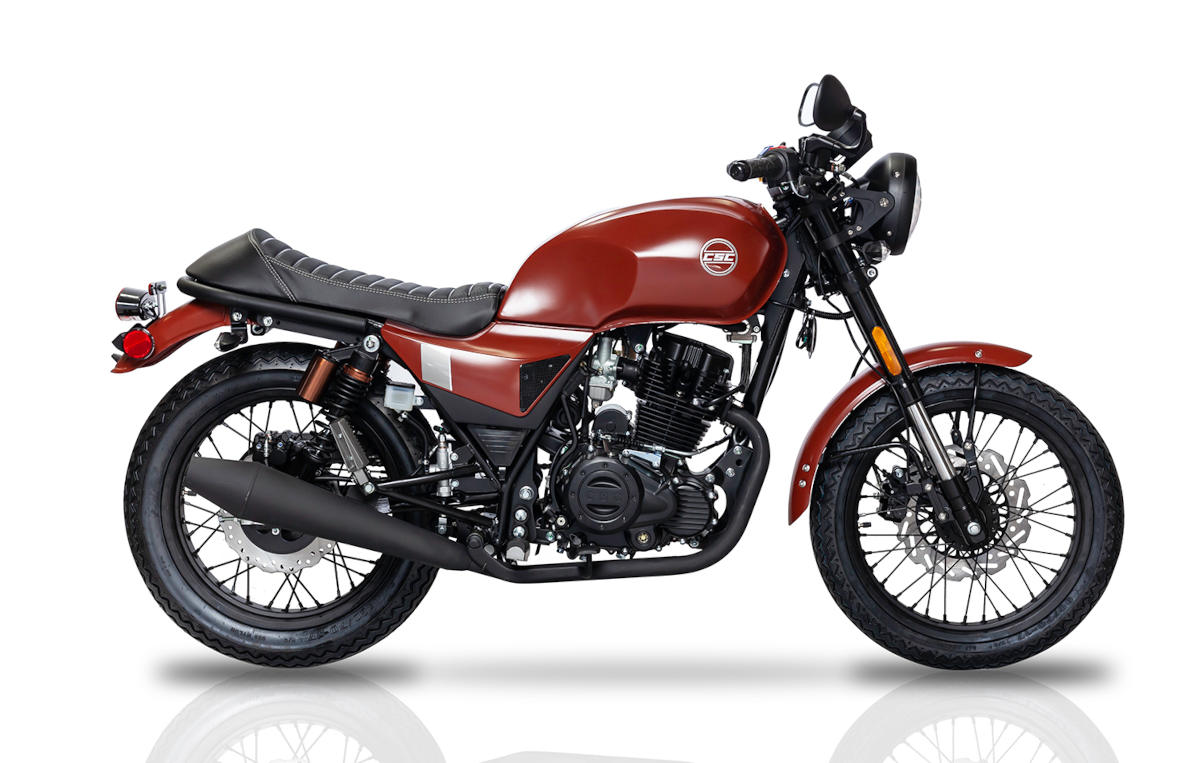 SG250 San Gabriel Cafe Racer
SG250 San Gabriel Cafe Racer